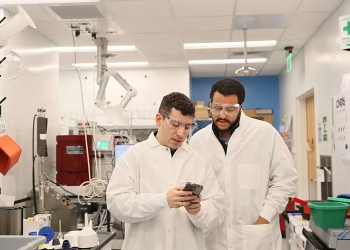The Joint United Nations Programme on AIDS (UNAIDS) has solicited for an increase in annual investments in HIV responses to $29 billion for Nigeria and other low- and middle- income countries to end the HIV epidemic.
This call to action comes from the 2024 Global AIDS Report, which highlights the urgent need for increased funding to combat the HIV/AIDS epidemic effectively.
The report emphasises that fully funding the HIV response is crucial for achieving the goal of ending AIDS as a public health threat by 2030.
Reports show that approximately 1.9 million people in Nigeria are living with HIV.
The need for funding
UNAIDS Executive Director Winnie Byanyima highlighted that the current funding levels are insufficient to sustain and accelerate progress.
The report identifies that an annual investment of $29 billion is needed to scale up prevention and treatment services, address inequalities, and strengthen health systems.
According to the report, the investment is not only a moral imperative but also a smart economic choice, with the potential to generate substantial health, social, and economic returns.
The report also points out that the HIV response has stalled in many parts of the world due to weak political will, social conservatism, insufficient funding, and persistent stigma and discrimination.
These barriers prevent key populations, including sex workers, men who have sex with men, and transgender people, from accessing the services they need.
Consequently, there has been little progress in reducing HIV incidence among these groups.
The current state of HIV epidemic in Nigeria
According to Dr. Tunji Alausa, minister of state for Health in Nigeria, over 1.6 million individuals are receiving antiretroviral therapy (ART), representing more than 90% of those diagnosed with the virus.
Despite these achievements, Nigeria still grapples with a high burden of pediatric HIV.
The National coordinator for the National AIDS, Viral Hepatitis, and STIs control program, Dr. Adebobola Bashorun, estimated that around 159,923 children aged 0-14 years were living with HIV, with only 32% of them receiving treatment in 2022.
This makes Nigeria one of the countries with the highest pediatric HIV burden globally.
Some of the key challenges affecting the spread of HIV in Nigeria include:
Nigeria has the highest number of annual HIV infections among children worldwide, accounting for 14% of the global total.
Efforts to reduce mother-to-child transmission have seen limited success, with a reduction of only 15% between 2010 and 2020, compared to 70% in countries like South Africa and Uganda.
Women and girls are disproportionately affected by HIV in Nigeria, driven by entrenched gender inequalities.
In 2021, 1.6% of women were living with HIV compared to 1% of men. Young women aged 15-24 are particularly vulnerable, with significantly higher infection rates than their male counterparts.
However, Nigeria has been supported by international donors, with the U.S. President’s Emergency Plan for AIDS Relief (PEPFAR) playing a critical role.
Over the past two decades, PEPFAR has invested $8.3 billion in HIV and tuberculosis prevention, care, and treatment in Nigeria, significantly strengthening the country’s public health system.
Additionally, initiatives like the CDC’s HIV Anti-Retroviral Therapy (ART) Surge in high-burden states and the DELTA2 project focus on providing technical assistance and capacity building.
What you should know
The report, titled “The Urgency of Now: AIDS at a Crossroads”, indicates significant progress in the fight against HIV but also highlights the ongoing challenges.
As of 2023, 39.9 million people were living with HIV globally, with 1.3 million new infections and 630,000 AIDS-related deaths in that year alone.
The majority of those affected are in sub-Saharan Africa, where HIV continues to have a devastating impact.
Despite these challenges, there have been notable successes. For instance, countries like Botswana, Eswatini, Rwanda, Tanzania, and Zimbabwe have achieved the “95-95-95” targets.
This means 95% of people living with HIV know their status, 95% of those who know their status are on antiretroviral treatment, and 95% of those on treatment have achieved viral suppression.































